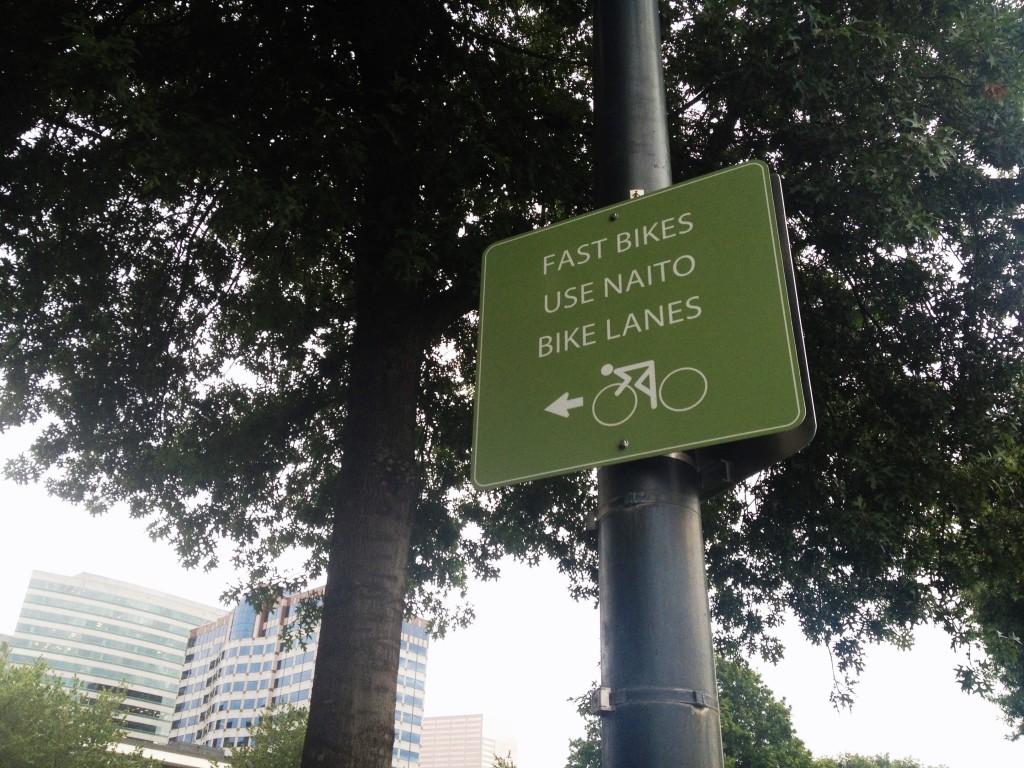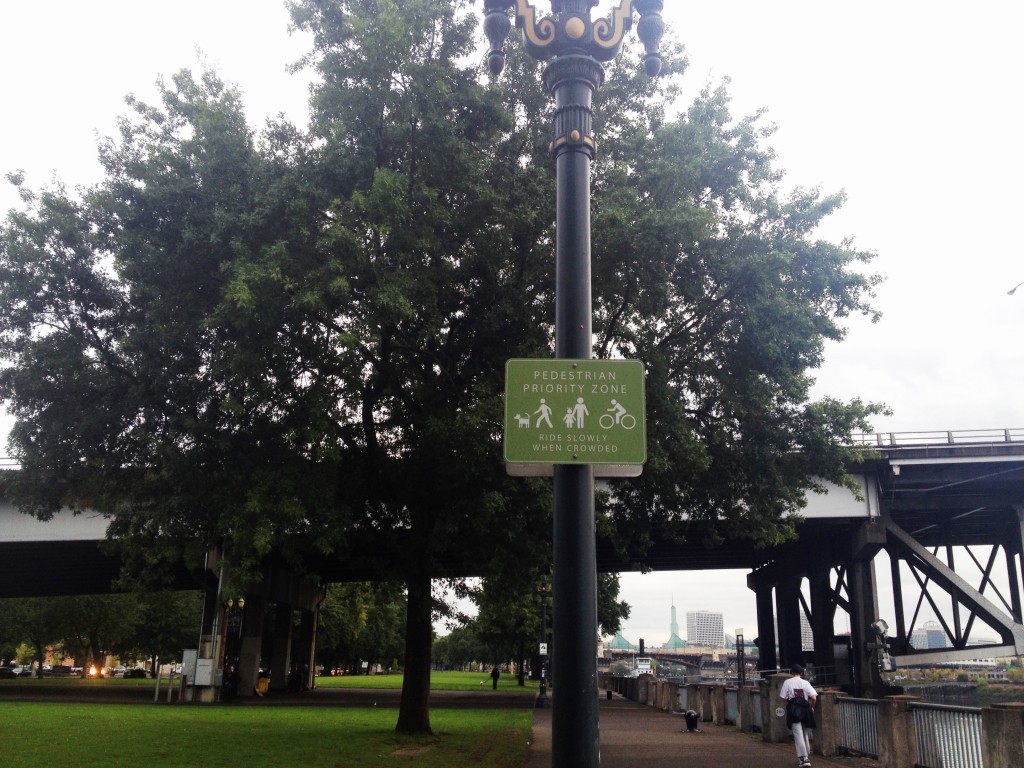Governor Tom McCall Waterfront Park was named one of the best public spaces in the country in 2012.
With a mix of walkers, joggers, cyclists, tourists on Segways, and animals on (and off) leashes the paths can be a jumble of transportation modes and uses.
The City of Portland has recently installed signs to encourage “faster” riders to use Naito Parkway and also to ride slowly when the path is crowded.

Credit: Amanda Ulrich, Instagram: @amandarunpdxforcongo

Credit: Amanda Ulrich, Instagram: @amandarunpdxforcongo
If a cyclist chose to ignore these signs and ride faster than conditions warrant could that person by cited? Yes, but not for breaking the laws that you may think.
The cyclist could not be (successfully) cited under state law. The Waterfront Path is a multi-use path. It is not a sidewalk under the law, because it is not on the side of a highway. It is, however, a bicycle path. What this means is that, under state law, a bicyclist is under no traffic law obligation to yield the right of way to pedestrians or provide an audible signal, nor maintain a speed reasonable under the basic rule. They are, however, under the same due care requirements that all people owe one another under civil negligence law.
The City of Portland, however, has the right to control traffic within parks. Bicycles are “traffic” when on the roadway and the city code extends the control of that traffic when bicycles are being operated within a park. The Portland Police Bureau is directly authorized to enforce the traffic control within parks and can therefore issue a citation for violating the city code. The fine can be up to $500.
Since the signs give clear directives, not suggestions, a bicycle rider who fails to operate slowly in crowded conditions, or who operates at a speed considered “fast” without using Naito Parkway, could be issued a citation. The signs, however, leave a lot to the subjective experience of the cyclist and a law enforcement officer over what is “fast”, “slowly”, and “crowded”.
